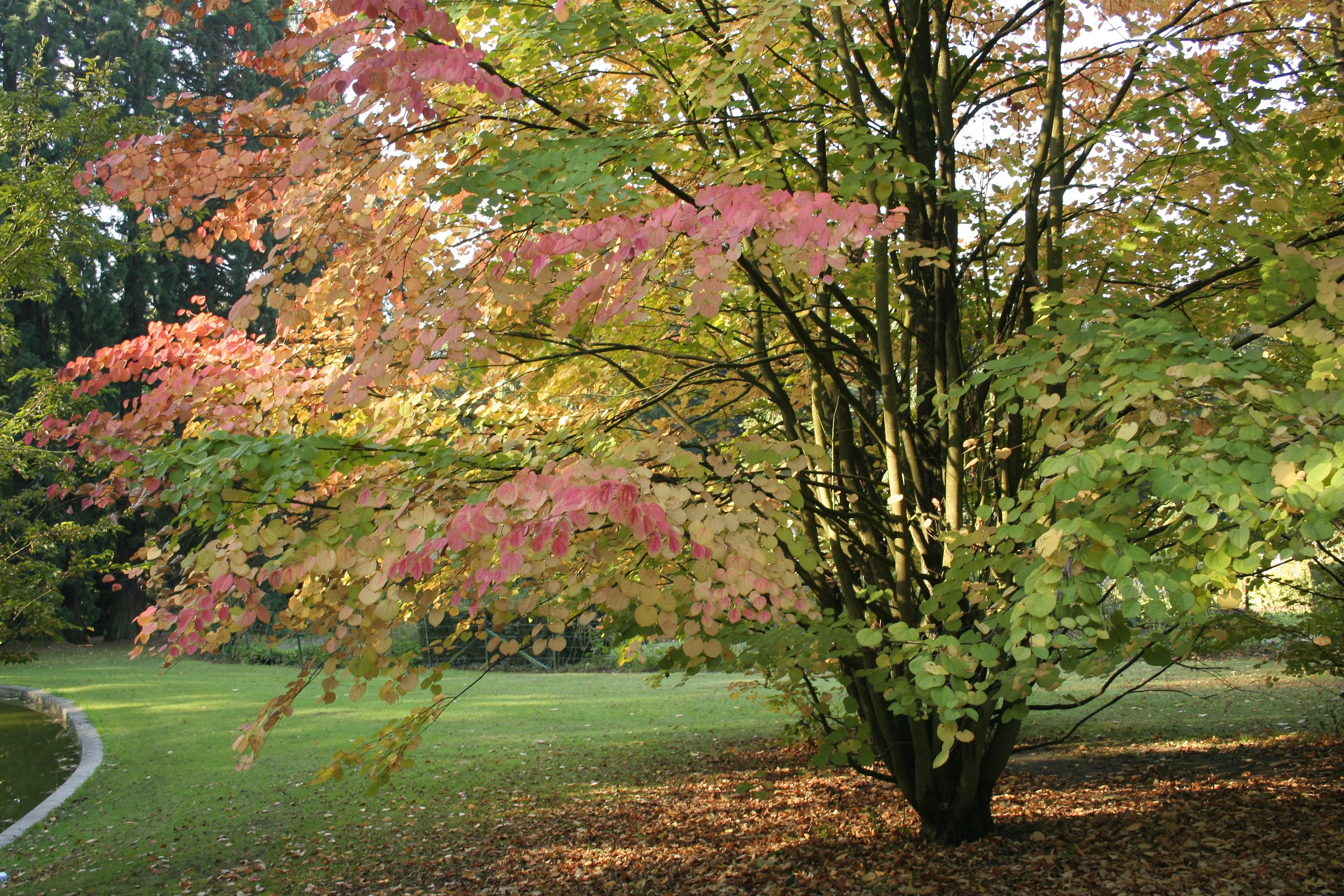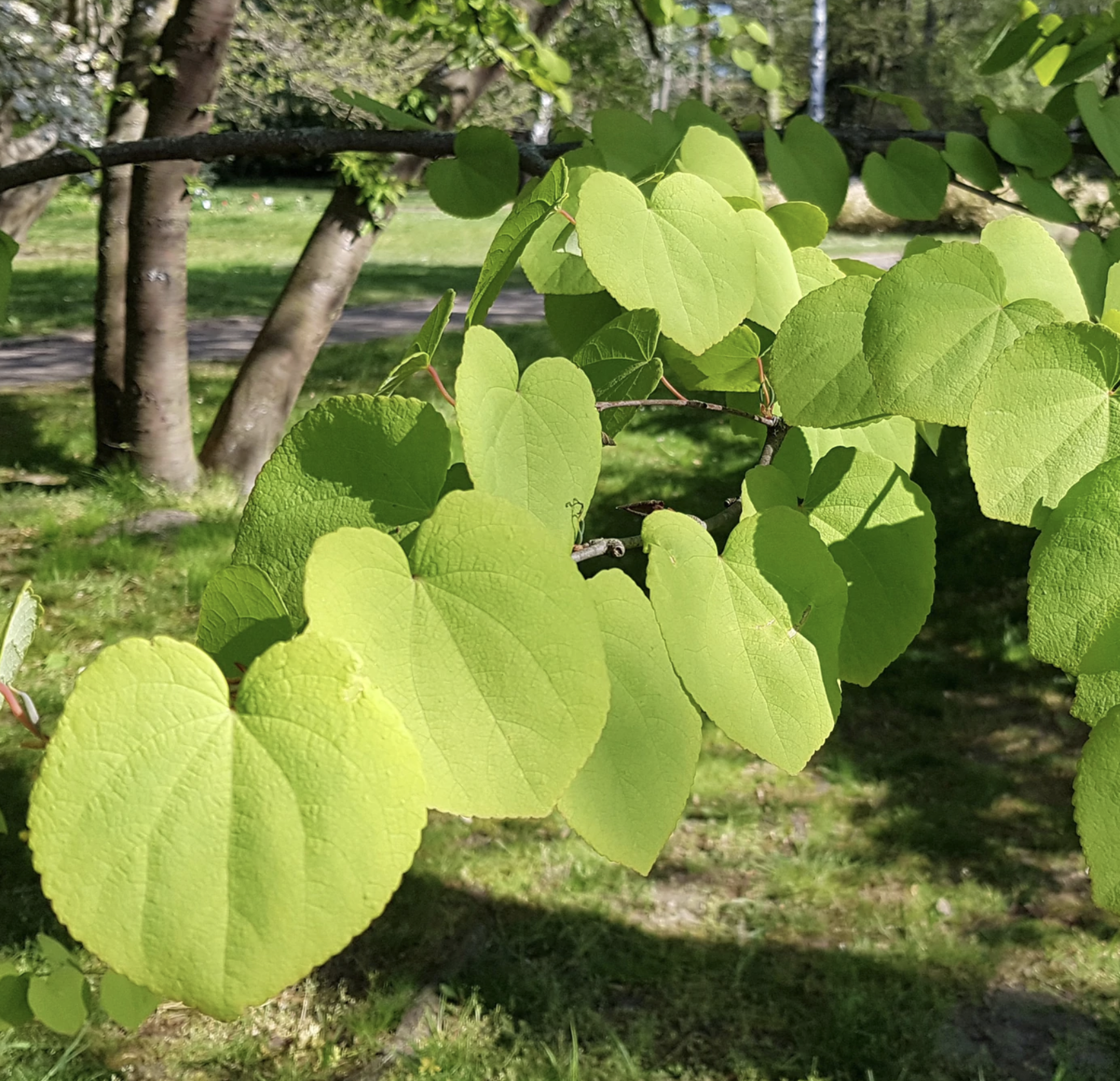In Ohio and much of the Midwest, many of the non-native trees and shrubs that can be found in the landscape are Asian in origin, due to the similar climate we share with that region of the world. This gives us a great opportunity to expand our options beyond native trees and shrubs when selecting suitable replacements or additions to our yards. Some non-native trees, such as Japanese maples, have become staples in our landscapes. In this article, we’ll discuss the Japanese katsura tree (Cercidiphyllum japonicum), a medium to large tree in maturity that is largely underutilized in the midwestern landscape, but might just be the perfect tree for your property.
The Japanese katsura tree is native to Japan and parts of China. Though it can grow to more than 100’ in height in its native wild habitat, it will generally reach 40-60’ in a landscape setting. Because of its larger size, the Japanese katsura tree should be planted in a location where it has room to grow and eventually become a shade tree.
The Japanese katsura tree has rounded, heart-shaped leaves and is deciduous (dropping its leaves in autumn). It has a wonderful yellow to slightly orange fall color that is accompanied by a distinctive smell, often described as burnt brown sugar or cotton candy, when the leaves begin to fall and decay. It prefers full sun but some protection from the wind, is generally insect and disease-free, and has a medium to fast growth rate under ideal conditions. It has a pyramidal shape when young, but matures into a more rounded canopy, reaching 30-40’ in width.
The Japanese katsura tree will tolerate the alkaline and clay soils often found in central Ohio, but it does prefer consistently moist and well drained soils (as do many trees!). For this reason, it’s important to give the tree a great start in the landscape with proper planting and after care for the first 1-2 years.
When younger, the Japanese katsura tree does have thinner bark, so it's trunk should be protected if you tend to have deer activity in your yard, as the antler rubbing from male whitetail deer in the late summer and early fall can severely damage or kill a tree. Also, care should be taken to maintain a mulch ring or landscape bed around the tree, as thinner barked trees are generally more susceptible to mechanical damage from mowers and string trimmers.
Overall, the Japanese katsura tree is a great choice for a central Ohio landscape. If you’re looking to plant a tree this year, be sure to do so in the spring or fall when temperatures and soil moisture are favorable, and give the Japanese katsura tree some consideration. It’s a great alternative option to our native shade trees, and will add wonderful form, color, and variety to your landscape.
The Entire 3-PArt series:
Walter Reins | Regional Manager, Russell Tree Experts
Walter has been an ISA Certified Arborist since 2003. He graduated from Montgomery College in Maryland with a degree in Landscape Horticulture, and has called Columbus, OH his home for nearly 20 years. Walter appreciates trees for their majesty and the critical role they play in our world.








